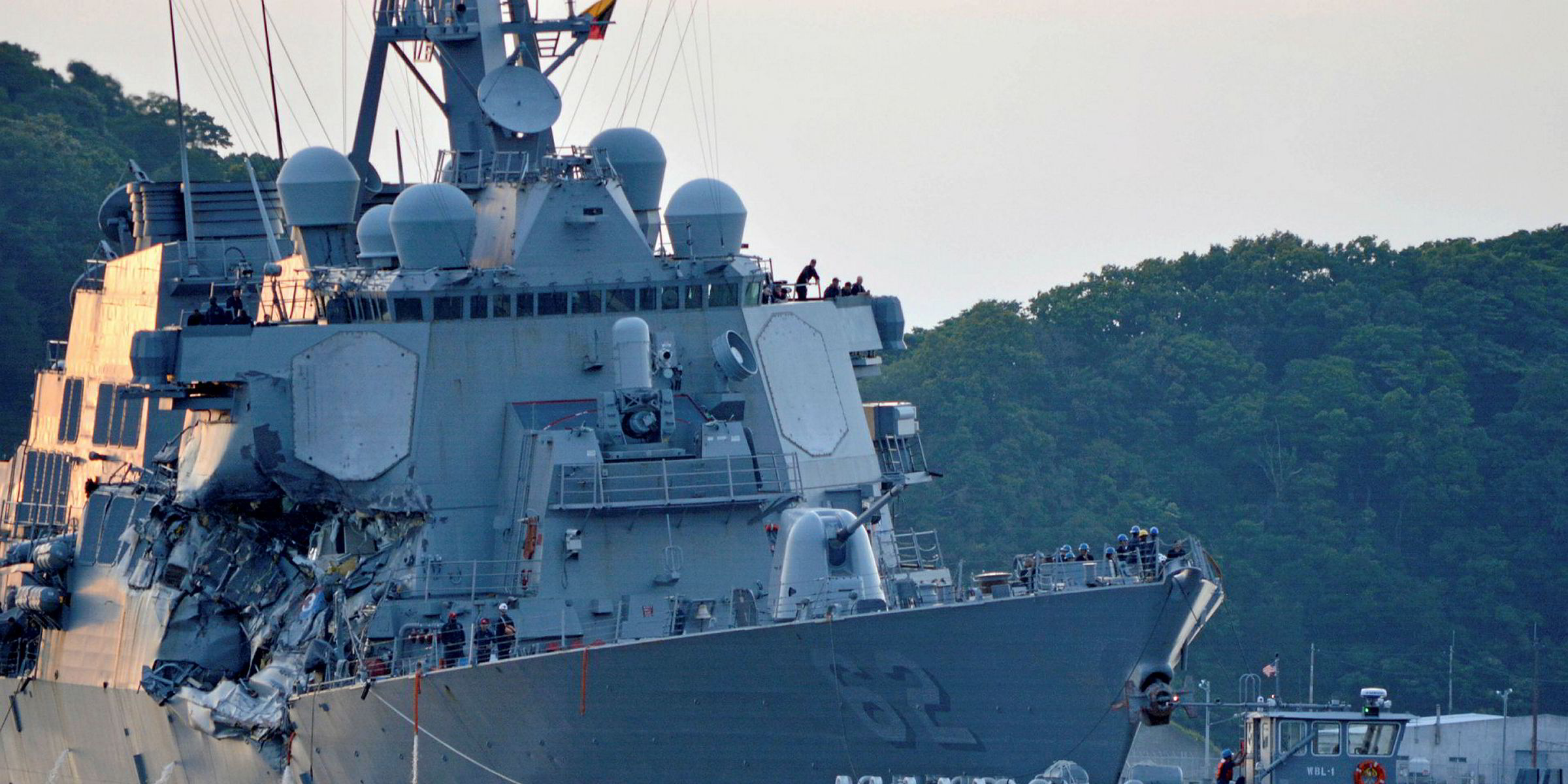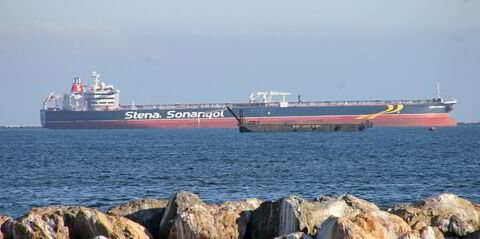Japan has suspended its safety investigation into the collision between the Aegis-built destroyer USS Fitzgerald and the 2,858-teu containership ACX Crystal (built 2008) after the US Navy and Coastguard declined to pass on critical evidence.
Immediately after the tragedy, which claimed seven US seafarers lives, both sides promised to share information in a joint safety probe.
But Japan has now suspended the investigation after the US failed to pass on crew testimony and evidence about the course the USS Fitzgerald travelled leading up to the collision.
As a US warship the USS Fitzgerald is not required to transmit AIS data.
Following the suspension, the Filipino second mate and officer of the watch on the ACX Crystal at the time of the incident were released without charge.
There is now a growing consensus among maritime experts that liability for the collision lies with the US Navy ship.
Pictures of the incident suggest that under collision regulations (Colregs) it is likely that the US Navy ship should have been the “give way” vessel and was at fault.
In leaks to the US press, the US Defence Agency has even gone as far as to suggest its preliminary findings put the fault firmly with the USS Fitzgerald, admitting some of the ship’s crew could have been negligent and could face military prosecution.
One US defence official reportedly said: “The way it looks now, it seems that the crew on the USS Fitzgerald is going to be at fault. They are certainly going to be held accountable in some way for their actions.”
It is unclear why the US is not ready to share its findings while seemingly admitting liability.
One suggestion is that the Fitzgerald could have had as many as six officers on watch at the time of collision and their failure to react to the ACX Crystal could prove embarrassing.
Another is that the US Navy is reluctant to release sensitive information on how the state-of-the-art radar and monitoring equipment on the destroyer failed to pick up the oncoming ACX Crystal.
Some observers claim that US Navy vessels are transiting the region with a carefree attitude to the rules of navigation.
The US evidence is critical to both Japan's criminal probe and safety investigation.
The Philippines, under which the ACX Crystal was registered, should have led the probe, but as the accident happened in Japanese waters it has taken the lead.
The Japanese are keen to learn lessons from the incident to prevent further collisions in the Irozaki channel, which links Tokyo Bay with shipping from China and Southeast Asia.
About 400 ships use the passage per day, making it one of Japan’s busiest shipping lanes.



